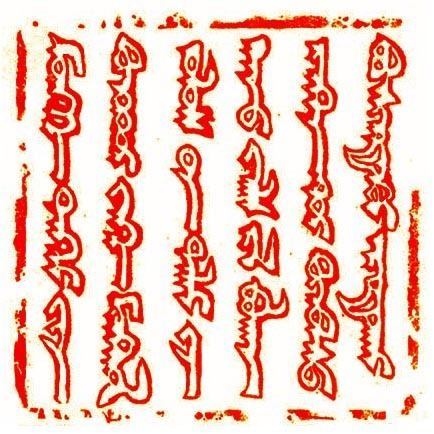 | ||
The Imperial Seal of the Mongols is a seal (tamgha-тамга) that was used by the Mongols. The imperial seals had inscriptions in Mongolian script or other scripts that used in various Mongol regimes such as the Mongol Empire and the Northern Yuan dynasty.
According to Plano Carpini, the Russian handicraftsman, Kozma, made a seal for Güyük Khan. This seal might have been a seal used to stamp the letter to Pope Innocent IV.
The Polish scholar, Cyrill Koralevsky, shot a photo of the seal in 1920. The prominent French Mongolist, P.Pelliot, translated the Mongolian scripts on the seal later. However, the Mongolists believe that Kozma made only one of the imperial seals and a seal on the letter is Genghis Khan's, which was inherited by his successors.
During the Yuan dynasty, which ruled the whole of China, there were several seals. Ayushridar had an imperial seal with the script "Northern Yuan". In the 16th century, the Mongols used a square-shaped seal. Ejei Khan gave one of those seals to the Manchus in 1635, who in turn established the Qing dynasty.
Bogd Jivzundamba, ruler of the Bogd Khaganate had a tamgha (seal) with the inscription "Holiness - Bogd Khaan who holds religion and authority" in the 20th century.
